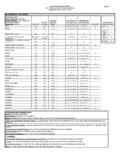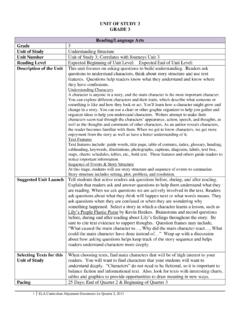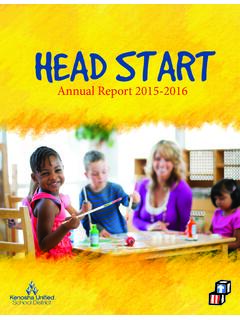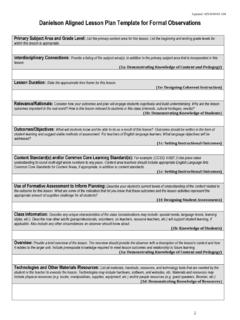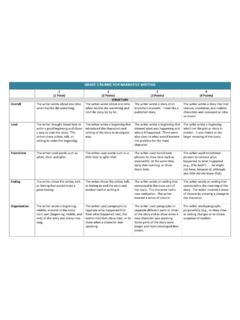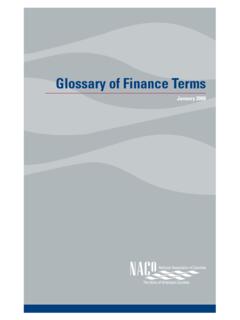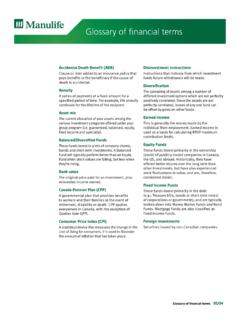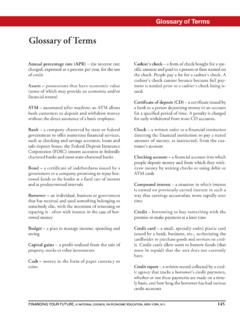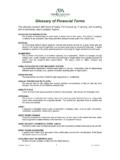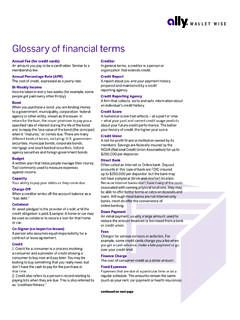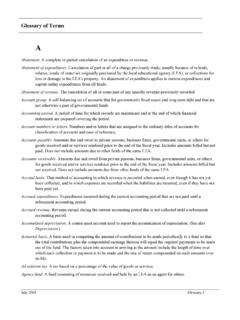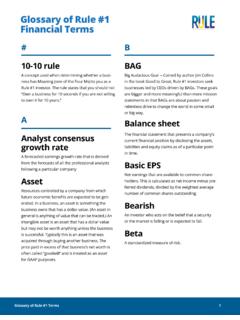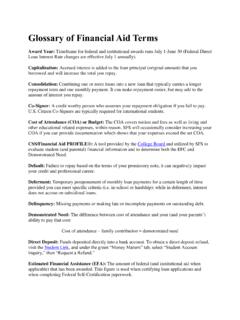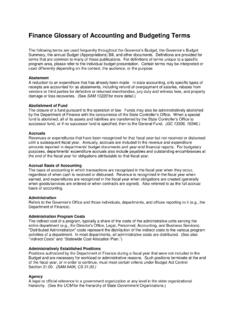Transcription of Glossary of School Finance Terms - kusd.edu
1 Glossary of School Finance Terms Published by Wisconsin Association of School District Administrators (WASDA) And Wisconsin Association of School Business Officials (WASBO) January 2003 Acknowledgements We gratefully acknowledge the efforts of Nicholas C. A. Alioto and Roger J. Dickson of the Public Business Consulting Group, LLC for their efforts in compiling and authoring this document. The authors express their appreciation to the following individu-als, who provided assistance with its development: Larry Krebs of the Neenah School District, Dennis Hanson of the Wisconsin Department of Public Instruction, Tom Griggs of Godfrey & Kahn, and Nelson Flynn of Michael Best & Friedrich, LLP. The definitions provided herein were compiled by the authors and rewritten using their own knowledge and definitions from the following sources: Wisconsin Department of Public Instruc-tion, Robert W. Baird and Company, and the glossaries from the departments of public instruction from Indiana and Michigan.
2 This publication may be reprinted without permission courtesy of the Wisconsin Association of School District Administrators and the Wisconsin Association of School Business Officials. A limited supply of additional copies are available for a fee. Con-tact the WASDA office for more information or go to or to view online. This publication was commissioned by the Wisconsin Association of School District Administrators and Wisconsin Association of School Business Officials and authored by Foreward School Finance can be daunting to understand, even for seasoned ad-ministrators. Some Terms can have different meanings, depending on the context in which they are used. Frequently, School board members, interested parents and community members are asked for their opinions or to support topics ranging from approving the budget at the Annual Meeting of Electors to supporting or opposing proposed legislation that will impact their School district.
3 In an effort to help increase the understanding of common School Finance Terms , the Wisconsin Association of School District Administrators (WASDA) and the Wisconsin Association of School Business Officials (WASBO) retained Public Business Consulting Group, LLC (PBCG) to produce this Glossary of School Finance Terms for the layperson. The purpose of this Glossary is to provide definitions of Terms that are currently used in School Finance discussions. The definitions used herein are written for the layperson. The definitions are appropriate for this intended purpose, however, in their simplification they lose some of their accuracy for the practicing administrator. This document should not be used as a technical guide for professionals with responsibility for implementing the many regulations associated with management of School district finances. Each School district and School Finance conversation is unique, there-fore, every term that is encountered may not be included in this glos-sary.
4 In the event that you encounter a term for which you would like clarification, contact your local School district administrator, the Wiscon-sin Department of Public Instruction (DPI) website at , or feel free to contact the authors at Sincerely, Gene Hamele Woodrow Wiedenhoeft WASDA President WASBO President Dr. Miles Turner Dr. Donald Mrdjenovich WASDA Executive Director WASBO Executive Director Table of Contents To enhance its usefulness, this document groups Terms by seven broad categories. A complete alphabetic listing of all Terms defined herein is provided in the index. Within the definitions, other Terms defined in this document are itali-cized. For Terms related to: Go to page: Accounting and Reporting 2 Budgeting.
5 6 Cost Calculations .7 Debt Transactions .8 Pupil Counting & Reporting ..11 School Funding ..13 Taxation 14 Index .. 16 1 Accounting and Reporting Account A method of categorizing financial transactions by type. Accounting Period The period of time represented by published financial statements. Wis-consin School districts prepare financial statements for a fiscal year be-ginning July 1st and ending June 30th, however, an accounting period can begin and end for other intervals; such as quarterly or monthly. Accounts Payable An account that reflects amounts owed by the district for goods and ser-vices received but not paid for at the date of the financial report. Ac-counts payable may include amounts owed to vendors, employees, finan-cial institutions and others; except other governments or other funds. Amounts reported here are payable within a short period of time, usually less than one year.
6 Accounts Receivable An account that reflects amounts owed to the district for goods and ser-vices. These amounts should be paid to the district within a short period of time, usually within one year. Accrual A method of accounting under which revenues are recognized when earned and expenditures are recognized when incurred, regardless of the timing of related cash flows. Most formal financial statements pre-pared on behalf of School districts are prepared using the accrual or modified accrual basis of accounting as contrasted with the cash basis. Annual Report A formal financial report filed with the DPI at the end of each fiscal year. The data in this report is used to calculate most state aids. Audit A formal examination of records and documents, and the securing of other evidence, for the purpose of determining whether transactions are complete and accurately recorded in the accounts; and that the state-ments fairly represent the financial transactions and condition of the dis-trict.
7 An independent audit of a School district s financial reports is re-quired annually. Balance Sheet A formal financial statement that reports the value of assets, liabilities, and fund balance as of a specific date. Budget Report A formal report filed with the DPI each fall that details the School board approved budget for the fiscal year. Also known as the Fall Report Capital Expansion Fund A fund that may be authorized at an Annual Meeting of Electors in a common School district or by the School board of a unified School district for the purpose of accumulating monies to be used for acquiring, remod-eling or maintaining buildings and sites. Monies budgeted into this fund are included in the district s total revenue limit. (Formerly referred to as a Capital Project Sinking Fund.) 2 Capital Outlay Expenditures for assets such as land, buildings and certain equipment. Capital assets are generally characterized as those having a useful life of greater than one year and a cost greater than an amount established by the School district s business department.
8 Cash Balance The actual cash on hand at a specific point in time. Many School districts will have a negative cash balance at some point in the year unless they borrow. Cash balance is contrasted to Fund Balance in that it includes only cash. Cash Basis A method of accounting under which transactions are recognized only when cash changes hands. An example of cash basis is an individual s income tax return that reports only cash received and paid, but does not recognize future earnings or amounts owed to others. Chart of Accounts A list of financial account names and numbers used to record financial transactions. The Department of Public Instruction prescribes the use of a chart of accounts called the Wisconsin Uniform financial Accounting Requirements. (WUFAR). The WUFAR uses a multi-dimensional coding structure that allows for recording transactions in such a manner as to allow financial reporting and analysis based on several characteristics.
9 The dimensions common to all School districts in Wisconsin are: Fund An independent fiscal and accounting entity, with its own set of assets, liabilities, revenues and expenditures, used to account for financial transactions in accordance with laws, regulations, or re-strictions. The DPI requires reporting of various revenues and expen-ditures within specified funds. Function An account designation that categorizes a reason or pur-pose served by a particular expenditure or made possible by a par-ticular receipt. Location An account designation that categorizes financial transac-tions by the building, department or operating unit given cause for the transaction. Object An account designation that categorizes an article or service obtained from a specific expenditure. Source An account designation that classifies revenues and other receipts according to their origin, such as local, state, or federal.
10 Project An account designation that categorizes the funding source of an expenditure or receipt. This coding is most often associated with projects that are funded with state or federal grants. Deferred Income Income received in a given fiscal year but not earned until after the fiscal year has ended. For example, monies collected from parents for their child s food service account that remain in the account for use in the next School year. 3 Due to Other Funds Amounts owed by one fund to another. The recognition of interfund payables in one fund requires the recognition of an interfund receivable in another fund. Because of this relationship, the aggregate amount of interfund payables must equal the aggregate amount of interfund re-ceivables at all times. Due to Other Governments Amounts owed to other units of government, including other School dis-tricts. Expenditures The costs of goods or services, whether paid or unpaid, including ex-penses, principal payments on outstanding debt and capital outlay.


